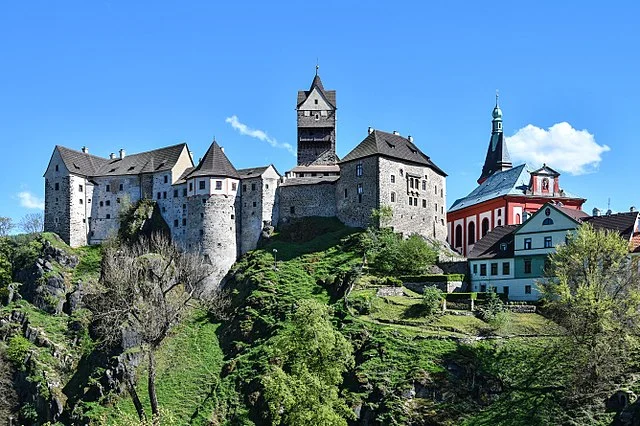Loket Castle is a medieval fortress located in the town of Loket, Czech Republic. This imposing structure, which has stood for over 800 years, played a key role in regional history, particularly in the defense and governance of Bohemia.
Get your dose of History via Email
Historical Origins
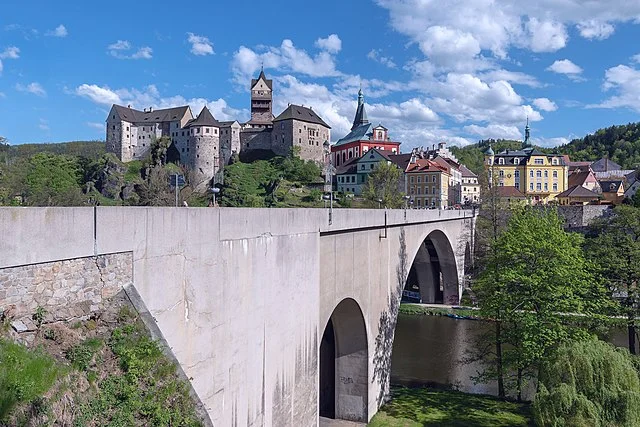
The construction of Loket Castle began in the early 13th century AD, during the reign of Přemyslid kings. Its strategic location on a rocky promontory, surrounded by the Ohře River on three sides, made it a formidable defensive position. The castle initially served as a royal fortress and administrative center for the region of western Bohemia.
By the late 13th century AD, Loket Castle became the property of King Wenceslaus II. He used it as a residence and a safe refuge for the royal family during times of unrest. This close connection with the Přemyslid dynasty solidified Loket’s significance as a political and military stronghold.
The Role of Loket in the Hussite Wars
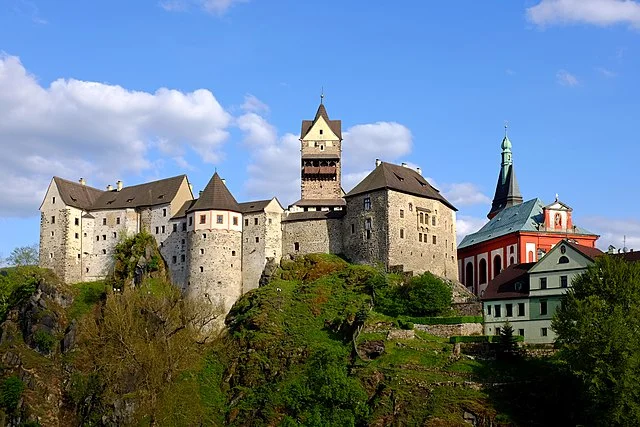
During the early 15th century AD, Loket Castle played a crucial role in the Hussite Wars (1419-1434 AD). The castle’s strategic position allowed it to withstand several sieges. Although the Hussites besieged the castle, Loket remained loyal to the Catholic forces and the king of Bohemia.
The fortress’s defensive design, which included thick walls and a tower, proved invaluable during these conflicts. Loket became a symbol of resistance against the Hussite movement.
Renaissance Period and Decline
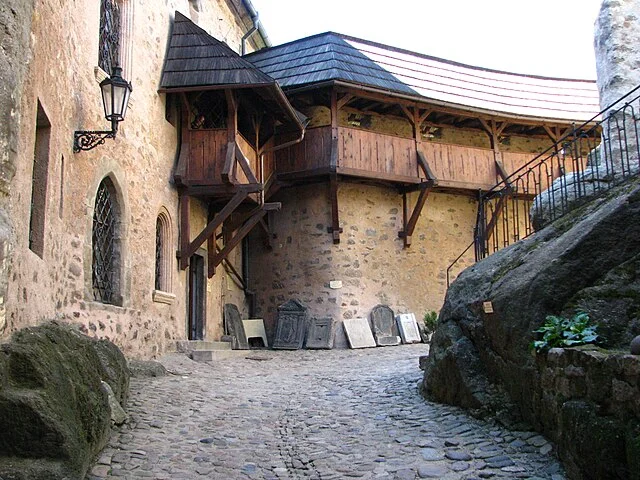
By the mid-16th century AD, the importance of Loket Castle began to wane. The rise of modern military technology, including cannons, made many medieval castles less effective for defense. Loket transitioned from a royal residence and military fortress to an administrative center and prison. During this period, several sections of the castle were renovated in the Renaissance style, reflecting the architectural changes of the time.
In the 17th century AD, the Habsburg Monarchy took control of the castle, and it was further used as a prison. This marked the beginning of a long period of neglect for the once-great fortress. While it continued to serve as a regional administrative center, Loket Castle fell into disrepair.
Restoration Efforts in the 19th and 20th Centuries
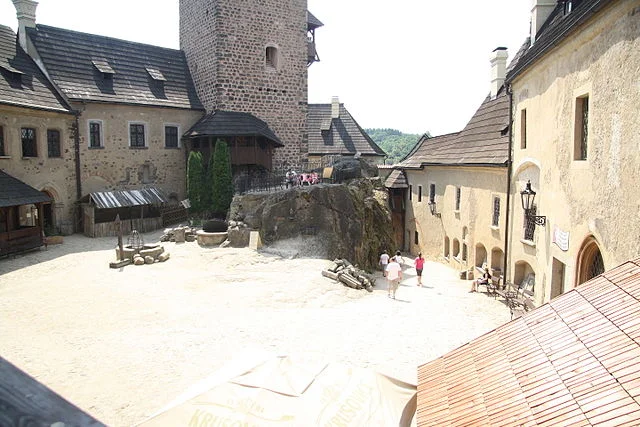
In the 19th century AD, efforts to restore Loket Castle began. With the rise of Romanticism, which celebrated medieval architecture and history, interest in preserving historical monuments grew. Loket became a symbol of national heritage. The castle underwent several restoration projects aimed at preserving its medieval character, including the Gothic and Renaissance elements.
After World War II, Loket Castle became a protected historical monument. Further restoration efforts in the latter half of the 20th century AD aimed at maintaining the structural integrity of the building. Today, the castle is one of the most well-preserved medieval fortresses in the Czech Republic.
Loket Castle Today
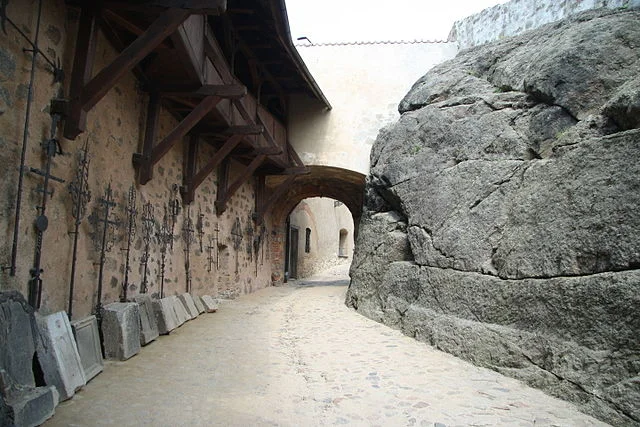
Loket Castle is now a popular tourist destination and cultural site. The fortress houses a museum that showcases its history, including medieval artifacts and exhibits on the castle’s role as a prison. The tower provides panoramic views of the surrounding area, while visitors can explore the various rooms and halls that have been restored to their historical appearance.
Loket Castle also hosts a variety of cultural events throughout the year, including medieval reenactments and festivals. These activities help visitors experience the castle’s historical significance in an engaging way.
Conclusion
Loket Castle’s long history, from its medieval origins to its role in the Hussite Wars and later periods of neglect, highlights its significance in Czech and European history. The preservation of Loket Castle serves as a reminder of the region’s medieval past and the important role that fortresses like it played in shaping the political and military landscape of Europe. Today, Loket Castle remains a testament to the enduring legacy of medieval architecture and history.
Source:

